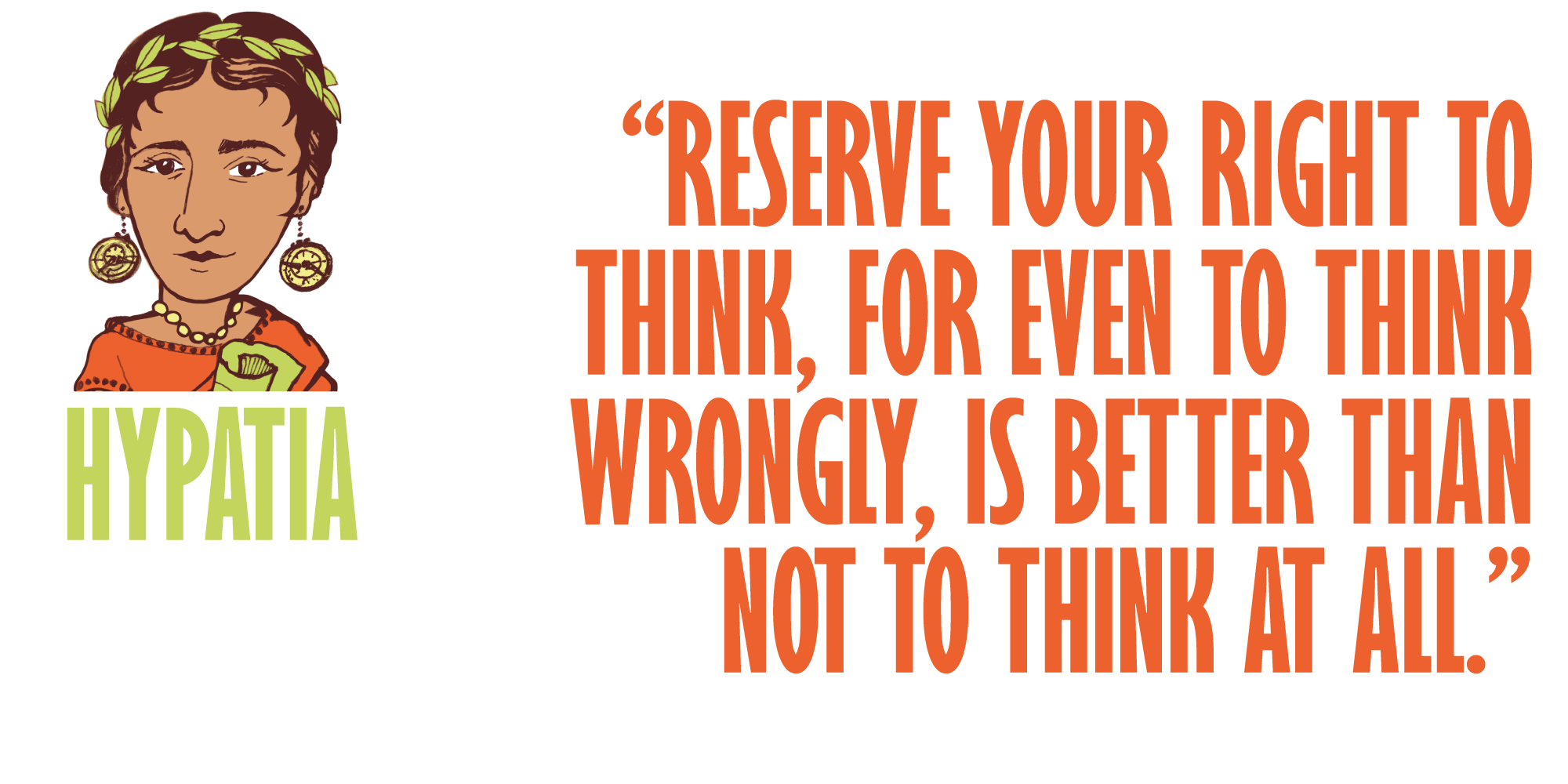When and where was she born?
Somewhere between 355 AD and 370 AD in Alexandria, Egypt which was then part of the Eastern Roman Empire. She was murdered by a rioting mob who it is thought believed she must have been a witch to achieve so much and be so clever.
Fun facts about her life
- She is thought to be the first female mathematician, philosopher and astronomer.
- She refused to wear traditional women’s clothes when teaching – she wore scholars’ robes instead like the other teachers!
- Name also spelt Ipazia
What’s important about her scientific work?
Hypatia taught about and constructed astrolabes, and worked on ground breaking algebraic equations and the complex mathematics of cone-like shapes as well as the motion of planets. She tried to follow the teachings of Ptolemy, a former great mathematician, to build a reliable mathematical model that predicted the movements of planets.

What do we know about her childhood?
Her father Theon was a scientist and headteacher of a school called ‘Mouseion, and brought up Hypatia in a very academic environment. It’s now thought by historians that perhaps he was trying to to create a ‘perfect human’. He taught her about the different religions of the world, and about how to influence people through words.
What struggles did she face?
Although she was a Pagan (a non believer), she tried to stop religious riots, and taught many Christians.
What did she achieve?
- She was a great mathematician and replaced her father as the leading mathematician of Alexandria.
- She was in-fact one of the prestigious mathematicians of her time. Famous mathematicians Isaac Newton and Descartes used her findings to develop their work.
- She was lecturer or teacher of philosophy.
- Hypatia was able to achieve more publicly as a woman, than many women for the next sixteen hundred years.










